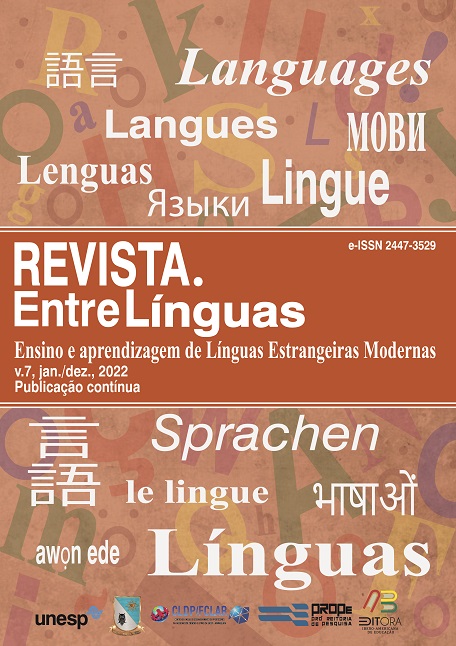The historical determination of the origin, ethnic roots and ethnogenesis of the old Turkic alphabet in the study of the old Turkic language in the turkological world
DOI:
https://doi.org/10.29051/el.v8i00.17677Keywords:
Old Turkish language, Old Turkish alphabet, Aramaic-Pahlavi alphabetAbstract
Studying the Old Turkish language is very important in terms of investigating the ethnic roots of Turks, distinguishing the stages of development of Turkic languages, determining their place among world languages, revealing the nationality of the people and awakening their national consciousness. The realization of all this is related to the scientific research of the ancient Turkish language on the one hand, and its teaching on the other hand. Although it is said that it is mostly derived from the Aramaic-Pahlavi alphabet, there are sufficient facts that prove its connection with tamgas. The signs representing these words-tamgas were later included as graphemes in the Old Turkic alphabet. It is those graphemes that create both pictorial sign and speech sound harmony that make the Old Turkic alphabet come into being. All this directly confirms that the ethnic origin of the Old Turkic alphabet is based on tamgas.
Downloads
References
ABDULLAYEVA, G. A. “Kul Tigin” monument. Baku: Azernashr, 2007, p. 214.
ALIYEV, Y. Old language. Baku: Science and Education, 2019, p. 147.
ARISTOV, N. A. Experience in clarifying the ethnic composition of the Kirghiz Cossacks of the Great Horde and the Karakirghiz. Living antiquity, n. 3-4, p. 28-34, 1894.
ASGAR, R. Orkhon monuments. Baku: Science and education, 2012.
HAJIYEV, T. A unified communication language for Turks. Baku: Education, 2013.
HAJIYEVA, Z. T. Old alphabet. Baku: Science, 1989.
HUSEYNZADE, A. The benefits of learning Turkish. “Hayat” newspaper, 1905.
KASHGARI, M. Diwan Lughat al-Turk. Translated and prepared for publication by Ramiz Asgar). Baku: Ozan, 2006. v. 1.
KHUDIYEV, N. The language of Old Turkic written monuments. Baku: Science and Education, 2015.
KIPCHAK, M. History of Turkic script. Baku: Laman Publishing House Polygraphy, 2017.
KIPCHAK, M. D. Turkic alphabets (Sogdian, Manichaean alphabet and passe-pa script). Baku: MBM publishing house, 2012.
MELIORANSKY, P. M. Monument in honor of KulTegin. St. Petersburg: Printing House of the Imperial Academy of Sciences, 1899.
RAJABLI, A. Phonetics of the Gokturk language. Baku: Nurlan, 2004.
RAJABOV, A. Monuments of Old Turkic writing. Baku: Nurlan, 2009. v. 1.
ROLIVANOV, E.D. Ideographic motif in the formation of the Orkhon alphabet. Bulletin of the Central Asian University, n. 9, p. 177-181, 1929.
SHUKURLU, A. The language of Old Turkic written monuments. Baku: Maarif, 1993.
SHUKURLU, A. The language of Old Turkic written monuments. Baku: Maarif, 2015.
Published
How to Cite
Issue
Section
License

This work is licensed under a Creative Commons Attribution-NonCommercial-ShareAlike 4.0 International License.
Os manuscritos aceitos e publicados são de propriedade da Revista EntreLínguas. Os artigos publicados e as referências citadas na Revista EntreLínguas são de inteira responsabilidade de seus autores.
Transferência de direitos autorais – autorização para publicação
Caso o artigo submetido seja aprovado para publicação, já fica acordado que o(s) autor(es) autoriza(m) a UNESP a reproduzi-lo e publicá-lo na EntreLínguas, entendendo-se os termos “reprodução” e “publicação” conforme definição respectivamente dos incisos VI e I do artigo 5° da Lei 9610/98. O artigo poderá ser acessado pela rede mundial de computadores (Internet), sendo permitidas, a título gratuito, a consulta e a reprodução de exemplar do artigo para uso próprio de quem a consulta, desde que haja a citação ao texto consultado. Essa autorização de publicação 328 EntreLínguas, Araraquara, v. 1, n .2, p. 323-328, jul./dez. 2015 não tem limitação de tempo, ficando a UNESP responsável pela manutenção da identificação do(s) autor(es) do artigo. Os artigos publicados e as referências citadas na Revista EntreLínguas são de inteira responsabilidade de seus autores.











